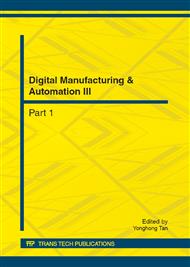p.1227
p.1234
p.1238
p.1244
p.1249
p.1254
p.1258
p.1261
p.1266
Evaluation Model of Dike Safety Based on Cusp Catastrophe Theory
Abstract:
Evaluation indexes (monitoring value) set in safety evaluation of dike, it was difficult in conforming the range of evaluation indexes, and could not reflect characteristic of outburst destroy. Catastrophe theory is a kind of mathematical method that problems of transition, discontinuity, and abrupt qualitative change based on analysissitus, problems about how a system of continuous quantitative change to evolving into jumping qualitative change can be analyzed. Firstly, the relation between deformation of dike with components of water pressure, temperature and time effect is analyzed, subdivision lemma of cusp catastrophe theory is cheesed, expression of potential formula on horizontal deformation is carried out based on influence of factor of time, water pressure and temperature. Moreover, normal form of catastrophe is advanced and critical rules of dike safety are put forward, evaluation model based on catastrophe theory is established. Finally, the model is validated with dike of Yellow River. Analysis shows that evaluating conclusion of the model is as the same as the practice, and it can not only reflect outburst destroy character of dike, but also evaluate safety degree in quantity, thus the model is good in adaptability and precision.
Info:
Periodical:
Pages:
1249-1253
Citation:
Online since:
July 2012
Authors:
Keywords:
Price:
Сopyright:
© 2012 Trans Tech Publications Ltd. All Rights Reserved
Share:
Citation:


